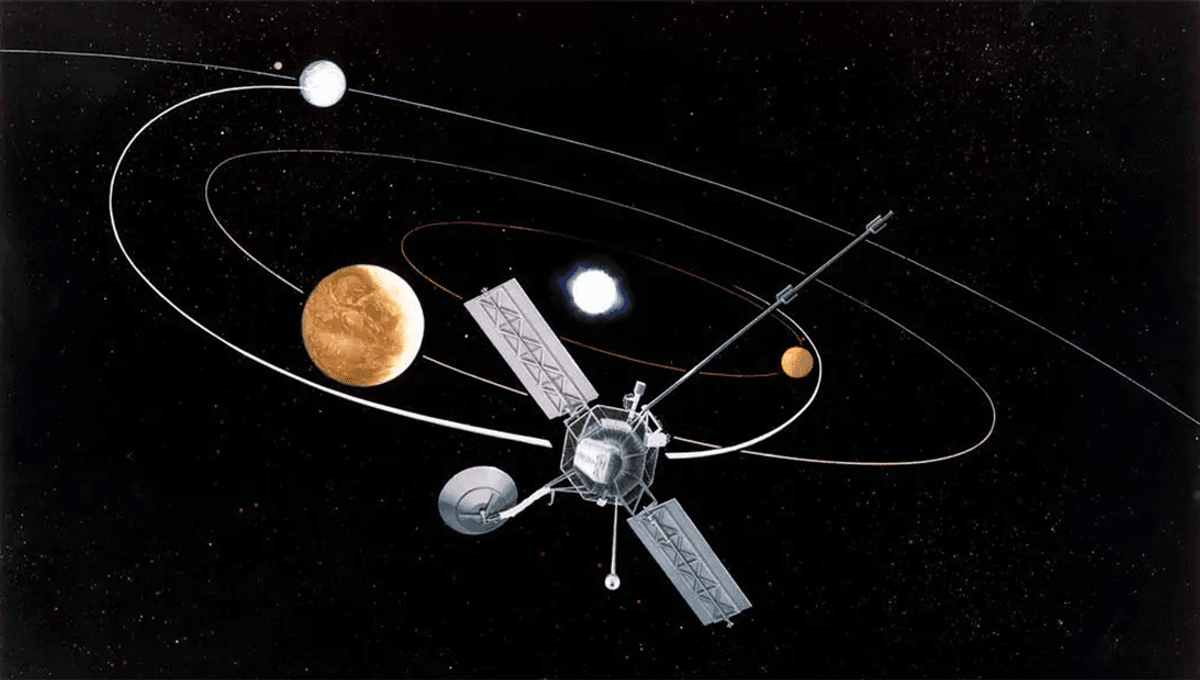
In 2017, astronomers at the Pan-STARRS observatory looking for near-Earth asteroids spotted an object as it hurtled past our Sun at 38.3 kilometers per second (23.8 miles per second, or 85,700 miles per hour).
Soon, telescopes around the world pointed in the unusual object’s direction, trying to capture as much data as they could before it moved away from the Sun. Looking at visible light reflecting off the object, scientists were able to determine its size and shape, finding it is around 400 meters (1,300 feet) long, and likely shaped like a pancake.
The speed and trajectory of the object, A/2017 U1, suggested that it did not come from our Solar System, and that it will leave our Solar System again. ‘Oumuamua, as it is now called, was our first confirmed interstellar visitor.
Catching up with ‘Oumuamua would be awesome for a whole host of reasons. When it passed through the Solar System, for example, the asteroid accelerated beyond what we would expect from gravity alone. This led some to (wildly) speculate that it could be an interstellar probe, or other non-natural object.
Trying to explain this acceleration has been difficult. The real scientific debate is not about the acceleration itself. Comets accelerate as they heat up and outgas, causing thrust, giving them their distinctive trail or “coma”. Outgassing could similarly explain ‘Oumuamua’s acceleration, but no coma was observed, and its shape is unusual for a comet. There are good explanations proposed, however, including that the object released hydrogen embedded within it as it passed through the Solar System and encountered the energy of the Sun.
Despite ‘Oumuamua’s speed making it a tricky object to catch, several missions have been proposed to do just that. Some of these employ a “Solar Oberth” maneuver, or using the Sun’s gravity to gain velocity.
NASA missions to the furthest reaches of the Solar System (and beyond) have used gravity assists to gain and lose speed, and conserve fuel. “Several robotic spacecraft have used the ‘gravity assist’ technique to achieve their targets ‘high up’ in the Sun’s gravity well. Voyager 2 launched in August 1977 and flew by Jupiter for reconnaissance, and for a trajectory boost to Saturn,” NASA explains.
“Voyager 1 launched the following month and did the same (reaching Jupiter before Voyager 2 did). Voyager 2 then obtained an assist from Saturn and another one later from Uranus, climbing all the way to Neptune and beyond. Galileo took one kick from Venus and two from Earth, while orbiting the Sun en route to its destination, Jupiter. Cassini took two boosts from Venus, one from Earth, and another from Jupiter to gain enough momentum to reach Saturn.”
The Oberth maneuver – named for Hermann Oberth, who suggested it in 1928 – essentially lets a spacecraft drop into an object’s gravity well, before using propellent to escape it. A Solar Oberth maneuver is a little more ambitious, as it would require the probe to be protected from solar radiation.
Other possible trajectories have been proposed that would instead use Jupiter to catch up with the probe. Either way, don’t expect us to reach the object anytime soon, with mission proposals generally expecting to reach it by 2050, no matter how cool the missions look.
Source Link: Animation Shows Project Lyra's Ridiculous Maneuver To Catch Interstellar Asteroid